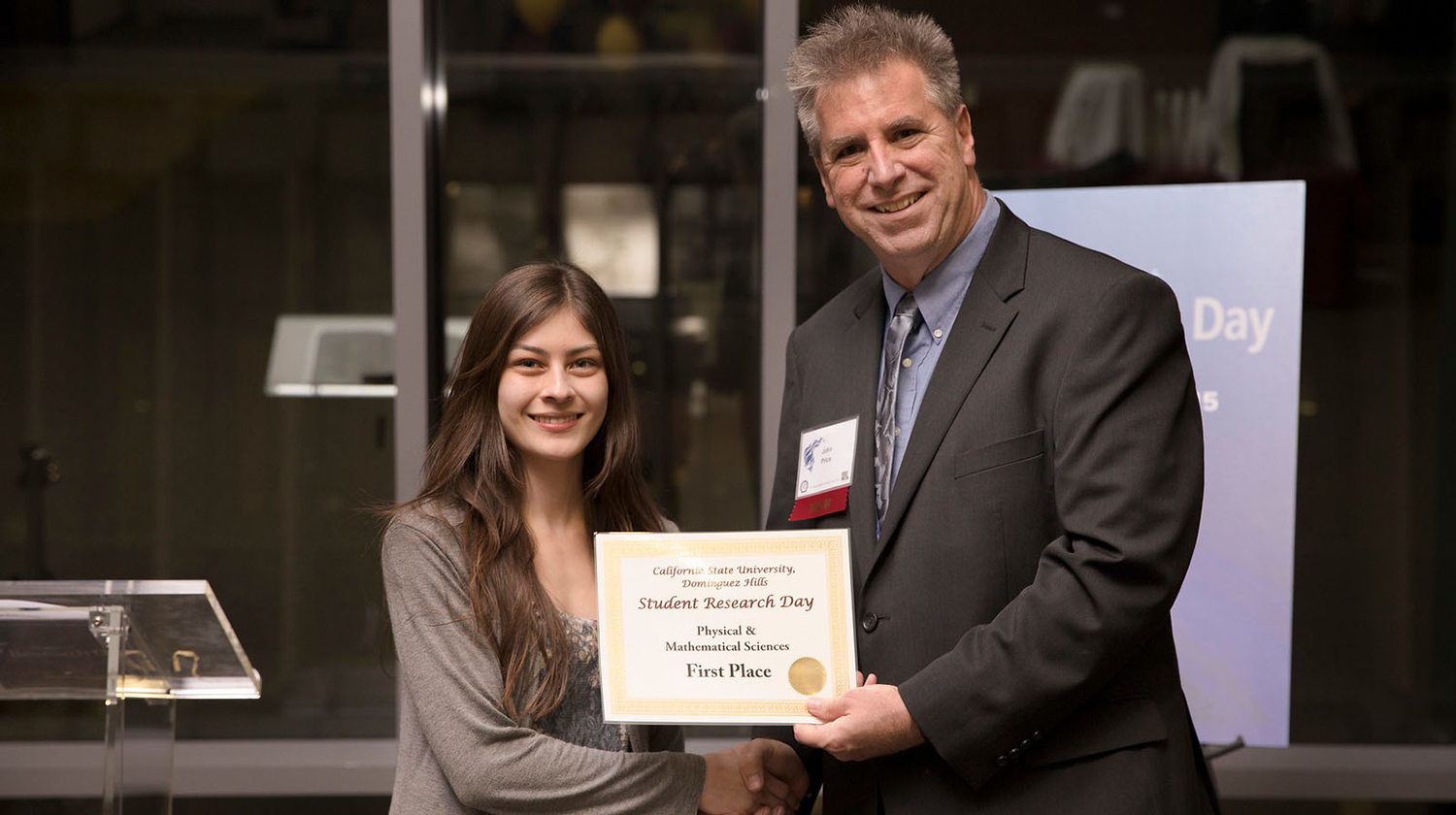
John Price, professor of physics and interim dean of graduate studies and research at California State University, Dominguez Hills (CSUDH), conducts original research in nuclear physics with his students, and their success has kept the funding coming in.
Price recently received a three-year, $300,000 grant from the U.S. Department of Energy (DOE) to expand “Nuclear Physics with Short-Lived Beams,” his ongoing experimental nuclear physics program in proton research.

This is the fifth grant the DOE has awarded Price for the program since 2007. The funding covers research costs for Price and his students, including travel to the Thomas Jefferson National Accelerator Facility in Newport News, Va., to conduct research using the CEBAF Large Acceptance Spectrometer (CLAS). Their research has been carried out at this facility since 2006.
“Participating in research is one of the best things undergraduate students can do to boost their future success in physics. This grant affords my students the opportunity to work with leading nuclear physicists from all over the world,” said Price, who has worked with 16 undergraduate students in the program over the past decade. Most go on to pursue graduate education in physics and related fields.
This DOE grant also funds a postdoctoral researcher to assist with the management of the project. “The addition of a postdoctoral researcher this year will help us to increase greatly the number of research projects we can pursue, and will also help to integrate our students into the work at the laboratory over the summer months,” Price said.
Cool Science Stuff
In his research, Price uses high-energy photons (light), which have very short wavelengths, to peer into a proton. Since subatomic particles like protons interact in various ways, researchers have to also use other types of probes to get a complete picture of the proton’s structure and its behavior, or how it scatters.
“The study of ‘nuclear physics’ is, quite literally, the study of the atomic nucleus and its components,” Price said. “The proton is the most basic of these; therefore, the study of its structure is the single most fundamental task of nuclear physics. Our work represents a new, virtually untapped method to expand this study.”
During the last DOE grant period, Price and his students used the Lambda particle to examine proton scattering. The Lambda particle has a structure similar to the proton and is made of different quarks to study proton interaction, but using this particle as a probe is complicated, since it travels only a few centimeters before decaying. “The main result of our previous work was the observation of this process, which had never been attempted before in nuclear physics,” Price said.
The new study will significantly expand that research to four other short-lived beam particles that travel just a few centimeters before they decay, but still provide enough time for the beams to interact with another particle in the target. The researchers will work to develop this technique by measuring the cross section for the proton-proton elastic scattering process.
“Our technique is similar to the way astronomers use various wavelengths of light to see different details of the structure of the universe, or physicians use both X-rays and MRI to image parts of the body,” said Price. “By using probe particles, which interact differently with the proton, we can measure aspects of the structure of the proton, which is one of the most fundamental questions in nuclear physics today.”
Over the next three years, Price and his team will seek to break new ground and contribute answers to those fundamental questions. “We will be developing a technique that will increase dramatically the number and types of processes that can be studied within the context of nuclear physics,” said Price. “We will be getting a more complete picture of what the proton looks like.”